《Morpohology The Descriptive Analysis of Words Second Edition》
| 作者 | 编者 |
|---|---|
| 出版 | The University of Michigan Press |
| 参考页数 | 342 |
| 出版时间 | 1949(求助前请核对) 目录预览 |
| ISBN号 | 无 — 求助条款 |
| PDF编号 | 812580958(仅供预览,未存储实际文件) |
| 求助格式 | 扫描PDF(若分多册发行,每次仅能受理1册) |

1.INTRODUCTION TO MORPHOLOGY1
1.1Morphology1
1.2Principles of Descriptive Analysis1
A.Descriptive Analysis Must Be Based upon What People Say1
B.The Forms Are Primary,and the Usages Secondary2
C.No Part of a Language Can Be Adequately Described without Reference to All Other Parts2
D.Languages Are Constantly in the Process of Change3
1.3 Relationship of Descriptive Linguistics to Historical and Comparative Linguistics3
1.4 Terminology of Descriptive Linguistics4
1.5 Arrangement of Contents of This Book4
1.6 Language Problems in the Present Volume5
2.THE IDENTIFICATION OF MORPHEMES6
2.1Morphemes as Minimal Units6
2.11 Isolation of Morphemes by Comparing Forms6
2.12 The Definition of the Morpheme6
2.2Principles Employed in the Identification of Morphemes7
2.21Principle 17
2.21.1 The Meaning of Principle 17
2.21.2The Application of Principle 18
A.Steps in Procedure8
B.Problems of Residues9
C.The Tentative Nature of an Analyst's Correlations10
D.Supplementary Problems Illustrative of Principle 111
2.22Principle 214
2.22.1 The Meaning of Principle 214
2.22.2The Application of Principle 215
A.Where the Sounds Involved Exhibit Some Phonetic Similarities15
B.Where the Sounds Involved May Not Exhibit Phonetic Similarities15
C.Where Sequences of Phonemes Are Involved16
D.Problems Illustrative of Principle 217
E.Steps in Procedure for Problems Involving Principle 218
F.Writing up the Answers to Problems19
G.Types of Phonological Environment Described in Terms of Processes21
1.Assimilation21
2.Dissimilation23
3.Assimilation of Tonemes24
4.Loss of Consonant Phonemes26
5.Loss of Vowel Phonemes30
6.Palatalization35
H.Supplementary Problems Illustrative of Principle 237
2.23Principle 341
2.23.1 The Meaning of Principle 342
2.23.2The Application of Principle 344
A.Determination of Allomorphs by Complementary Distribution44
B.Basis of Complementation44
C.Degree of Phonological Difference between Allomorphs44
D.Basic and Nonbasic Allomorphs45
E.Types of Zero46
F.Supplementary Problems Illustrative of Principle 346
2.24Principle 454
2.24.1 The Meaning of Principle 454
2.24.2 The Application of Principle 455
2.25Principle 555
A.Definition of Homophonous Forms56
B.Definition of Related Forms56
C.Types of Related Areas of Meaning56
D.Types of Distributional Differences57
E.Problems Illustrative of Principle 557
2.26Principle 658
A.Condition 159
B.Condition 259
C.Condition 360
3.TYPES OF MORPHEMES62
3.1Internal Composition of Morphemes62
3.11Types of Phonemes Which Compose Morphemes62
3.11.1 Morphemes Consisting of Segmental Phonemes62
3.11.2 Morphemes Consisting of Suprasegmental Phonemes62
3.11.3 Morphemes Consisting of Segmental and Suprasegmental Phonemes65
3.12 Different Shapes and Sizes of Morphemes65
3.13 Formal Relationships of the Parts of Morphemes67
3.2Formal Relationships of Morphemes to Each Other68
3.21Structural Relationships of Morphemes to Each Other69
3.21.1 Additive Morphemes69
3.21.2 Replacive Morphemes71
3.21.3 Subtractive Morphemes75
3.22 Positional Relationships of Morphemes to Each Other76
4.THE DISTRIBUTION OF MORPHEMES78
4.1Significance of the Distribution of Morphemes78
4.2Types of Morphemes as Determined by Their Distribution81
A.Bound vs.Free Forms81
B.Roots vs.Nonroots82
C.Roots vs.Stems83
D.Nuclei vs.Nonnuclei83
E.Nuclear vs.Peripheral Structures84
F.Morphemes of the Same Order vs.Morphemes of Different Orders84
G.Mutually Exclusive Morphemes84
H.Mutually Obligatory Morphemes84
I.Obligatory vs.Nonobligatory Morphemes85
J.Closing vs.Nonclosing Morphemes85
4.3 Formal Combining of Morphemes85
4.4Immediate Constituents86
4.41 Significance of Immediate Constituents86
4.42Positional Relationships between Immediate Constituents88
A.Continuous Nuclear and Peripheral Immediate Constituents88
1.Continuous Nuclear and Peripheral Immediate Constituents88
a.With All Successive Peripheral Constituents on One Side of the Nucleus88
b.With Successive Peripheral Constituents on More than One Side of or within the Nucleus89
2.Discontinuous Immediate Constituents-Nuclear,Peripheral,or Both90
B.Combinations of More than Two Immediate Constituents90
4.43Principles of Procedure in Determining Immediate Constituents90
4.43.1 Principle 191
4.43.2 Principle 291
4.43.3 Principle 392
4.43.4 Principle 492
4.43.5 Principle 592
4.44Functional Relationships between Immediate Constituents94
4.44.1 Endocentric vs.Exocentric Constructions94
4.44.2 Coordinate vs.Subordinate vs.Noncoordinate and Nonsubordinate Constructions95
4.5 Types of Morphological Structure97
4.6 Primary Structural Layers98
4.7The Limits of Morphological Structures102
4.71 Structural Contrasts102
4.72 Phonological Criteria for Establishing the Limits of Morphological Structures102
4.73 Distributional Criteria for Establishing the Limits of Morphological Structures103
4.74 Overlapping between Phonological and Morphological Criteria104
4.75 Overlapping between Morphological and Syntactic Distributional Data104
4.76 The Practical Limits of the Word106
5.STRUCTURAL CLASSES107
5.1Types of Structural Classes107
5.11 Form Classes107
5.12 Sequence Classes108
5.13Distribution Classes110
5.13.1 Definitions of Significant Features110
5.13.2Types of Distributional Arrangements111
5.13.21Distributional Arrangements in Single Sequence Classes111
5.13.21.1Forms Occurring in Determiner-Determined Series112
5.13.21.11 Structural Series with No Subclasses of Determiner and No Subclasses of Determined112
5.13.21.12 Structural Series with Subclasses of Determiner and No Subclasses of Determined112
5.13.21.13 Structural Series with No Subclasses of Determiner but Subclasses of Determined117
5.13.21.14 Structural Series with Subclasses of Determiner and Subclasses of Determined125
5.13.21.2 Forms Not Occurring in Determiner-Determined Series127
5.13.22 Distributional Arrangements in Multiple Sequence Classes130
5.2 Systems of Structural Classes147
6.THE MEANING OF MORPHEMES AND SEQUENCES OF MORPHEMES151
6.1Semantic Principles151
6.11 Principle 1151
6.12Principle 2152
A.Nonlinguistic Environments152
1.Objective Environments152
2.Subjective Environments152
B.Linguistic Environments153
1.Structural Environments153
2.Contextual Environments154
6.13Principle 3157
6.2 The Use of Symbols161
6.3 Definability of Meaning161
6.4 Procedures in Determining the Meanings of Morphemes162
6.5 The Labeling of Morphemes165
6.6 Grammatical Categories Expressed by Bound Forms166
6.7 The Meaning of Grammatical Sequences174
7.FIELD PROCEDURES175
7.1Monolingual Approach175
7.2Bilingual Approach178
7.21The Data178
7.21.1 Simple Object Words178
7.21.2 Object Words in Possible Morphological Categories180
7.21.3 Simple Process Words181
7.21.4 Process Words in Possible Morphological Categories182
7.21.5 Combinations of Object and Process Words183
7.21.6 Texts186
7.22 Recording the Data188
7.23The Informant189
7.23.1 Dialect Differences among Informants189
7.23.2 Qualifications of Informants190
7.23.3 Handling of Informants190
8.ANALYTICAL PROCEDURES192
8.1Relationship of Analytical to Field Procedures192
8.2Steps in Analytical Procedure192
8.21Initial Observations192
8.21.1 Phonetic Observations193
8.21.2 Identificational Observations193
8.21.3 Distributional Observations194
8.22Filing of Data195
8.22.1 Purpose of Filing Data195
8.22.2 Form of the Filing Slip195
8.22.3 Relationship of Filing to Analysis196
8.22.4 Nature and Quantity of the Data to be Filed198
8.22.5 Number of Files199
8.22.6Form of the Structural File199
8.22.61 Morphophonemic Section200
8.22.62 Morphology Section200
8.3 Determining the Relative Order of Morphemes205
8.4 Use of Arbitrary Symbols in Identifying Forms207
9.THE DESCRIPTIVE STATEMENT OF THE MORPHOLOGY222
9.1Structural Difficulties222
9.11Illustrative Outlines222
9.11.1 Chichewa,by Mark Hanna Watkins223
9.11.2 Chiricahua Apache,by Harry Hoijer225
9.11.3 Delaware,by C.F.Voegelin226
9.11.4 French,by Robert A.Hall,Jr.227
9.11.5 Hebrew,by Zellig S.Harris229
9.11.6 Potawatomi,by Charles F.Hockett230
9.11.7 Southern Paiute,by Edward Sapir231
9.11.8 Tzeltal,by Marianna C.Slocum234
9.11.9 Yuma,by A.M.Halpern235
9.12 Discussion of Illustrative Outlines237
9.2Technical Difficulties239
9.21 Systems of Outlining239
9.22 Terminology240
9.23 Types of Descriptive Statements240
9.3 Illustrative Language Problems243
APPENDIX283
Part I:Supplementary Problems283
A.Problems Supplementary to Section 2.22.2283
A.1Assimilation and Dissimilation283
A.2 Medial Voicing290
A.3 Final Unvoicing290
A.4 Assimilation and Dissimilation of Tonemes291
A.5 Reduction of Word-Medial Consonant Clusters293
A.6 Reduction of Word-Final Consonant Clusters296
A.7 Reduction of Vowel Sequences297
A.8 "Weakening"of Consonants301
A.9 "Weakening"of Vowels in Unstressed Syllables302
A.10 Loss of Vowels in Unstressed Syllables303
A.11 Differences of Vowel Length Due to Open and Closed Syllables306
A.12 Compensatory Lengthening306
A.13 Developed Phonemes307
A.14 Palatalization308
A.15 Nasalization310
A.16 Verner's Phenomenon311
A.17 Metathesis312
B.Problems Supplementary to Section 2.23.2313
C.Problems Supplementary to Chapter 3315
D.Problems Supplementary to Chapter 5320
E.Problems Supplementary to Chapter 6324
Part II:Table of Phonetic Symbols329
Part III:Phonemic Writing of English332
BIBLIOGRAPHY335
INDEX339
1949《Morpohology The Descriptive Analysis of Words Second Edition》由于是年代较久的资料都绝版了,几乎不可能购买到实物。如果大家为了学习确实需要,可向博主求助其电子版PDF文件(由 1949 The University of Michigan Press 出版的版本) 。对合法合规的求助,我会当即受理并将下载地址发送给你。
高度相关资料
-

- THE ELEMENTS OF DESCRIPTIVE ASTRONOMY SECOND EDITION
- 1921 OXFORD AT THE CLARENDON PRESS
-

- METHODS OF REAL ANALYSIS SECOND EDITION
- JOHN WILEY & SONS,INC.
-

- MORPHOLOGY THE DESCRIPTIVE ANALYSIS OF WORDS SECOND EDITION
- 1946 THE UNIVERSITY OF MICHIGAN PRESS
-
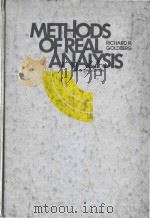
- Methods of real analysis Second Edition
- 1976 Wiley
-

- A course of analysis Second Edition
- 1939 Cambridge University Press
-

- The Penguin Dictionary of Troublesome Words Second Edition
- 1984 Penguin Books
-

- UROLOGY VOLUME THREE SECOND EDITION ATLAS OF DESCRIPTIVE EMBRYOLOGY THIRD EDITION
- 1963 W.B.SAUNDERS COMPANY
-
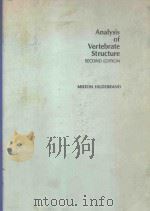
- ANALYSIS OF VERTEBRATE SECOND EDITION
- 1982 JOHN WILEY & SONS
-
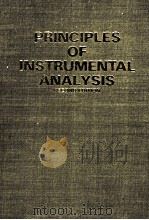
- PRINCIPLES OF INSTRUMENTAL ANALYSIS SECOND EDITION
- 1980 SAUNDERS COLLEGE
-
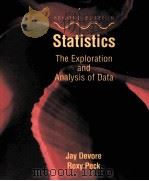
- STATISTICS THE EXPLORATION AND ANALYSIS OF DATA SECOND EDITION
- 1993 DUXBURY PRESS
-
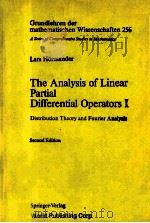
- THE ANALYSIS OF LINEAR PARTIAL DIFFERENTIAL OPERATORS I SECOND EDITION
- 1990 SPRINGER-VERLAG
-
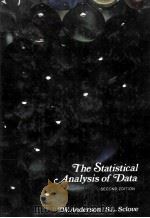
- THE STATISTICAL ANALYSIS OF DATA SECOND EDITION
- 1986 THE SCIENTIFIC PRESS
-
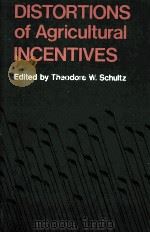
- DISTORTIONS OF AGRICULTURAL INCENTIVES
- 1978 INDIANA UNIVERSITY PRESS
-
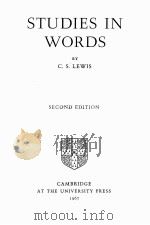
- STUDIES IN WORDS SECOND EDITION
- 1967 CAMBRIDGE AT THE UNIVERSITY PRESS
-
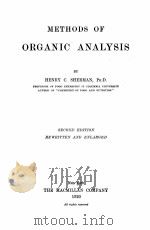
- METHODS OF ORGANIC ANALYSIS SECOND EDITION
- 1920 THE MACMILLAN COMPANY
提示:百度云已更名为百度网盘(百度盘),天翼云盘、微盘下载地址……暂未提供。➥ PDF文字可复制化或转WORD